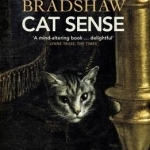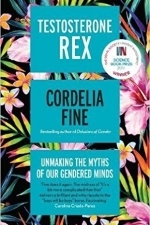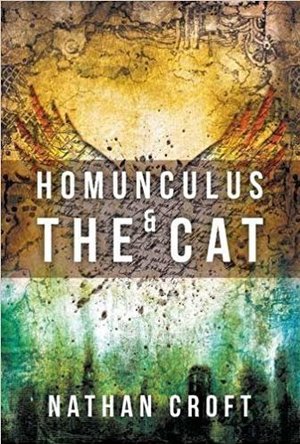
PowerNomics: The National Plan to Empower Black America
Book
PowerNomics: The National Plan to Empower Black America is a five-year plan to make Black America a...
Rachel King (13 KP) rated A Short History of Myth in Books
Feb 11, 2019
In seven chapters, Armstrong takes a simplified stroll through history, focusing on the concept of myth and its impact on civilization. All throughout the book, she attempts to support her claim that a person can believe in myths without believing that the myths are actually true, and that the failure of modern society is by not following her specific edict. While this notion strikes me as absurd, I keep reading because, hey, it's a short book.
While I know only bits and pieces about many of the world's religions, I do know both the history and the holy book of my religion, Christianity. It becomes apparent to me early in the text that she is masking her opinions and interpretations of this religion as actual fact, so I can only imagine how she misconstrues other religions.
Her citations were lacking to me, with many claims going unsupported, others only partially supported, such as citation #84 and #30, and some citations simply not even applying to the specified text, such as citation #87. In citation #55, she claims that the Bible contains a Creation myth in which God brings the world into being by killing a sea monster, but one of the four verses she cites make no reference to anything of the sort (Job 3:12), and the other three (Isaiah 27:1, Job 26:13, Psalm 74:14) that do mention a leviathan cannot be interpreted that way when read in context. Isaiah is describing the end of days, while Job merely says that God created the serpent, and the verse in Psalm is within the context of a song about God rescuing the Hebrews from Egyptian slavery -- no relevancy to Creation. She makes the claim that Paul "was not much interested in Jesus's teachings, which he rarely quotes, or in the events of his earthly life." This claim is easily disproved by examining how Paul's words line up with Jesus's in John 5:21 vs. 1 Corinthians 15:22, Matthew 6:25 vs. Philippians 4:6, and many other passages.
While going through the citations, I got the feeling that the author depended on secondary sources for her information without actually studying the original source of her information. The book struck me as highly opinionated, vague, and too general for the topic being addressed. I have no doubt that there are better and more thorough books available on the topic of myth. I do not believe that I will be reading any more of Armstrong's works in the future.

Mayim's Vegan Table: More Than 100 Great-Tasting and Healthy Recipes from My Family to Yours
Book
While she's an actress with a Ph.D. in neuroscience, at the end of the day Mayim Bialik is a mom,...

Myths of the World: Of Fiends and Fairies - A Magical Hidden Object Adventure (Full)
Games and Entertainment
App
Unlock the complete adventure with a single purchase! No in-app purchases! Race against time to...

Myths of the World: Of Fiends and Fairies HD - A Magical Hidden Object Adventure (Full)
Games and Entertainment
App
Unlock the complete adventure with a single purchase! No in-app purchases! Race against time to...
Recollections from the Ranks: Three Russian Soldiers' Autobiographies from the Napoleonic Wars
Book
From Napoleon's invasion of 1812 to the Wars of Liberation and beyond, seen from the common Russian...
graveyardgremlin (7194 KP) rated The Titanic for Dummies in Books
Feb 15, 2019
Chock-full of facts that range from the building of the Titanic to the 1985 expedition when it was finally found to why the ship's legacy still lives on, THE TITANIC FOR DUMMIES is a nicely arranged, easy to read history for those who either have a passing interest or intermediate knowledge of the Titanic. Although aficionados on the infamous ocean liner most likely won't find anything new between the covers.
The author wrote this with the intent that each section could be read both straight-through or out of order, which can make it slightly repetitive if read front to back (as I did) or too quickly. I found that reading only a chapter or two at a time was a more enjoyable experience overall and kept me from getting overwhelmed by all the information. The writing is clear, easy to understand, and all encompassing to anything related to the Titanic. I enjoyed reading about some of the ludicrous myths, in which the author debunks most of them, the list of recommended documentaries to see, and well, most everything. I only noticed a few minuscule errors, most of which did not involve Titanic history and were mainly grammar, but nothing worth mentioning. The only negative I can find to the book is the lack of pictures, it only features three pages of color photographs, and a few more added diagrams of the ship. Throughout the book's text there also could have been more black and white photos included. The most glaring exclusion from the book is that there is no picture of the "Big Piece", a 15x25 foot, 20-ton piece of the hull that had been salvaged from the wreck site and was mentioned extensively throughout the book. I would have welcomed the addition instead of hopping online to see a <a href="http://www.vegasnews.com/56809/titanics-largest-recovered-artifact-the-big-piece-at-titanic-the-artifact-exhibition.html">picture</a>; of the famous piece. Also, at one time there was a table of Titanic's ten decks, with descriptions and what rooms were on those decks, that would have been better served with a diagram of the ship to help those of us who are more visually-inclined. Those are fairly minor complaints in comparison to the breadth of material this book covers however.
Highly informative, concise, and written for anyone of any age, I would recommend The Titanic for Dummies to anyone interested in learning more about the Titanic, it's a great primer that has left me more knowledgeable about a subject I've always been fascinated by.
Click <a href="http://titanicphotographs.com/">here</a>; for some great photographs taken by passenger, Father Francis Browne, who disembarked from the Titanic when it docked in Cobh (then Queenstown), Ireland.
Eleanor Luhar (47 KP) rated Homunculus and the Cat in Books
Jun 24, 2019
So I've been reading this book for quite some time now, and honestly I nearly gave up on it a few times. But for the sake of the review, I managed to keep on at it until the end.
What I managed to gather from this book is that it takes place in a whole different universe, where myths and gods are real. Winged cats with nine lives, flying carpets, even homunculi. The main characters include the Ennedi Ankh' Si, a flying cat, Tyro, a simple human, and homunculi such as Mina and Herakles. A homunculus sanctuary, fighting for equal rights for their kind, is caught in a fire. In desperate need of help, the crew end up travelling all over the place - including to an underwater palace of a goddess, where they participate in a huge battle.
If I'm really honest, I can't tell you much more than that. There's some suspicious dude called Manga, and Tyro tries to rescue his friend Herakles - requiring a trip back to good ol' America. But other than that, I'm not quite sure what happened.
The writing itself is actually pretty good. The descriptions and metaphors are great, and there's a good deal of underlying humour in places. And the whole idea of this universe full of gods and demons and creatures both beautiful and terrible is wonderful. It's just a shame that I couldn't get into it. I felt like I was reading most of it through a daze, just trying to get it over with.
I will give this the benefit of the doubt - maybe I wasn't in the right frame of mind for it, or I just wasn't paying enough attention. Others may enjoy this a lot more than I did. But I'm going to give it just two stars, which honestly feels like I'm pushing the bar a little already.

Cat Sense: The Feline Enigma Revealed
Book
From John Bradshaw, one of the world's leading experts on animal behaviour, and the author of the...

Testosterone Rex: Unmaking the Myths of Our Gendered Minds
Book
WINNER OF THE 2017 ROYAL SOCIETY INSIGHT INVESTMENT SCIENCE BOOK PRIZE What the judges said: 'Every...
gender studies science

